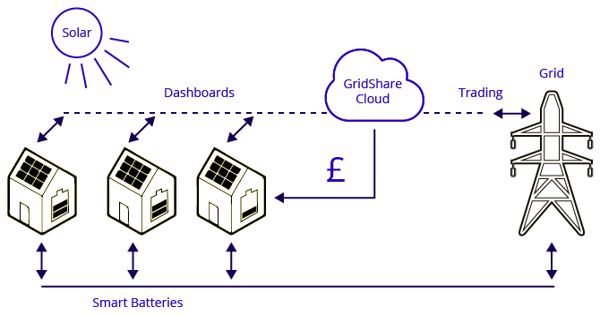When created and assembled, the nano-scale electrical components in gadgets like smartphones are solid, immobile things that cannot be changed in any way. But physics researchers at the University of California, Irvine have found nanoscale objects that, although being in solid states, may change into a variety of shapes and sizes.
This discovery has the potential to significantly alter both how atomic-scale quantum materials are studied by scientists and the nature of electrical gadgets. The study is published recently in Science Advances.
“What we discovered is that for a particular set of materials, you can make nano-scale electronic devices that aren’t stuck together,” said Javier Sanchez-Yamagishi, an assistant professor of physics & astronomy whose lab performed the new research. “The parts can move, and so that allows us to modify the size and shape of a device after it’s been made.”
Similar to magnets installed on refrigerator doors, electronic gadgets can be modified and reconfigured in any way you desire.
Researchers dream of having flexibility and control in their experiments, but there are a lot of restrictions when dealing with nanoscale materials. Our results show that what was once thought to be fixed and static can be made flexible and dynamic.
Professor Javier Sanchez-Yamagishi
“The significance of this research is that it demonstrates a new property that can be utilized in these materials that allows for fundamentally different types of devices architectures to be realized, including mechanically reconfigure parts of a circuit,” said Ian Sequeira, a Ph.D student in Sanchez-Yamagishi’s lab.
If it sounds like science fiction, said Sanchez-Yamagishi, that’s because until now scientists did not think such a thing was possible.
Indeed, Sanchez-Yamagishi and his team, which also includes UCI Ph.D. student Andrew Barabas, weren’t even looking for what they ultimately discovered.
“It was definitely not what we were initially setting out to do,” said Sanchez-Yamagishi. “We expected everything to be static, but what happened was we were in the middle of trying to measure it, and we accidentally bumped into the device, and we saw that it moved.”
They observed especially that small gold wires at the nanoscale could slide across special crystals known as “van der Waals materials” with incredibly little resistance.
They created electronic devices using single-atom thick graphene sheets attached to gold wires that can be reconfigured into a variety of different shapes on the fly by taking advantage of these slippery surfaces.
Gold is frequently found in electronic components because of how effectively it conducts electricity. It’s unclear, though, just how the discovery would affect businesses that make use of such gadgets.
“The initial story is more about the basic science of it, although it is an idea which could one day have an effect on industry,” said Sanchez-Yamagishi. ”This germinates the idea of it.”
Meanwhile, the team expects their work could usher in a new era of quantum science research.
“It could fundamentally change how people do research in this field,”Sanchez-Yamagishi said.
“Researchers dream of having flexibility and control in their experiments, but there are a lot of restrictions when dealing with nanoscale materials,” he added. “Our results show that what was once thought to be fixed and static can be made flexible and dynamic.”
Other UCI co-authors include Yuhui Yang, a senior undergraduate at UCI, and postdoctoral scholar Aaron Barajas-Aguilar.
















